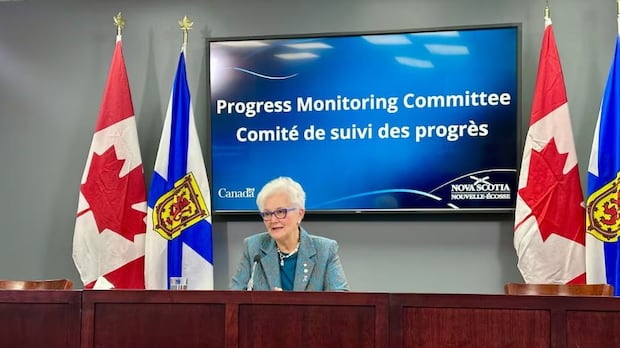N.S. Power fined $1M for again failing to meet performance standards

Nova Scotia Power is facing a $1.25-million penalty for failing to meet its 2023 performance standards — standards the utility has never been able to meet since they were implemented seven years ago.
The Nova Scotia Utility and Review Board announced the fine in a written decision released Monday morning.
The board noted that Nova Scotia Power has taken some steps to improve its performance, but overall it said progress “has been lagging.”
“More needs to be done and with greater urgency,” the board said.
Nova Scotia Power is not allowed to recover the cost of the penalty from ratepayers. Rather, the penalty is to be credited to customers through a mechanism used to adjust power rates, no later than the end of October.
Failed to meet 3 of 14 targets
There were 14 performance standards laid out for Nova Scotia Power last year, and it met 11 of them.
Two of the missed targets relate to reliability. The average power outage should not have lasted any more than 4.29 hours. In fact, the average outage in 2023 lasted 5.21 hours. The average number of outages per customer should not have exceeded 2.05, but it came in at 2.18.
Those numbers do not include outages caused by adverse weather events such as hurricanes, which are assessed in a different category, or planned outages.
The other missed target was for how long it took to connect new services. The board looked at five subcategories, including the addition of new poles and line extensions. All but one of the five took longer, on average, than they should have, exceeding the standard by between nine hours and a day and a half.
Largest fine to date
In the seven years that Nova Scotia Power has failed to meet performance standards, which are set by the regulator, it’s been fined four times.
It faced a $250,000 fine for failing to meet 2019 targets; $375,000 for 2021; and $750,000 for 2022.
This is the first year the board has been allowed to levy a fine greater than $1 million. Last year, a law came into effect allowing for a maximum fine of $25 million.
In addition to the latest penalty, the board ordered the utility to file a comprehensive written version of its five-year reliability plan by the end of this year.
The utility has referred to such a plan in previous filings to the board, but it has never provided one in writing.
Utility says it’s trying to improve
Nova Scotia Power did not make anyone available for an interview Monday, but provided a written statement attributed to CEO Peter Gregg that reiterated arguments previously made to the board.
“We recognize that we need to do better, not only in meeting our performance standards, but in our relentless focus on reliable, affordable power for Nova Scotians,” the statement read in part.

The utility said it is making “significant investments in system reliability,” but alluded to the challenges of worsening weather events.
This argument was also made in a submission to the board, in which the utility said its efforts to improve performance are being offset by “the escalating impacts of climate change” and a “persistent growth in work volume.”
Adverse weather events
Performance standards during adverse weather events require the utility to restore power to a majority of customers within 48 hours. The exact number of customers that are supposed to be brought back online in that time frame depends on the severity of the storm.
The utility is also expected to answer at least 85 per cent of customer service calls within 45 seconds during severe outage events, and produce an outage report 45 to 75 days out from the events. Nova Scotia Power met all the adverse weather event targets for 2023.
However, the board noted that if the reliability standards were to include adverse weather events, average restoration time last year would have been more than 23 hours, and the average number of outages per customer would have been 4.97.
Similarly, it noted that planned outages, although not considered in the performance evaluation, affected more than half of customers, and lasted an average of 1.97 hours.
The board said the information “provides valuable insight into operational activities and potential opportunities to improve overall outage performance.”

In an email to CBC News, a spokesperson for the utility highlighted that annual spending on reliability has increased to $230 million from $180 million.
But spending alone is not good enough in the eyes of the regulator.
“If more frequent and damaging storms are becoming the new normal, N.S. Power needs to ensure that its performance, not just its investment plans, keeps up with those changes,” the board said in its decision.
Nova Scotia Power highlighted a new “reliability department” created in 2023, consisting of almost 60 employees. Except for one external hire, all of those people were existing employees.




